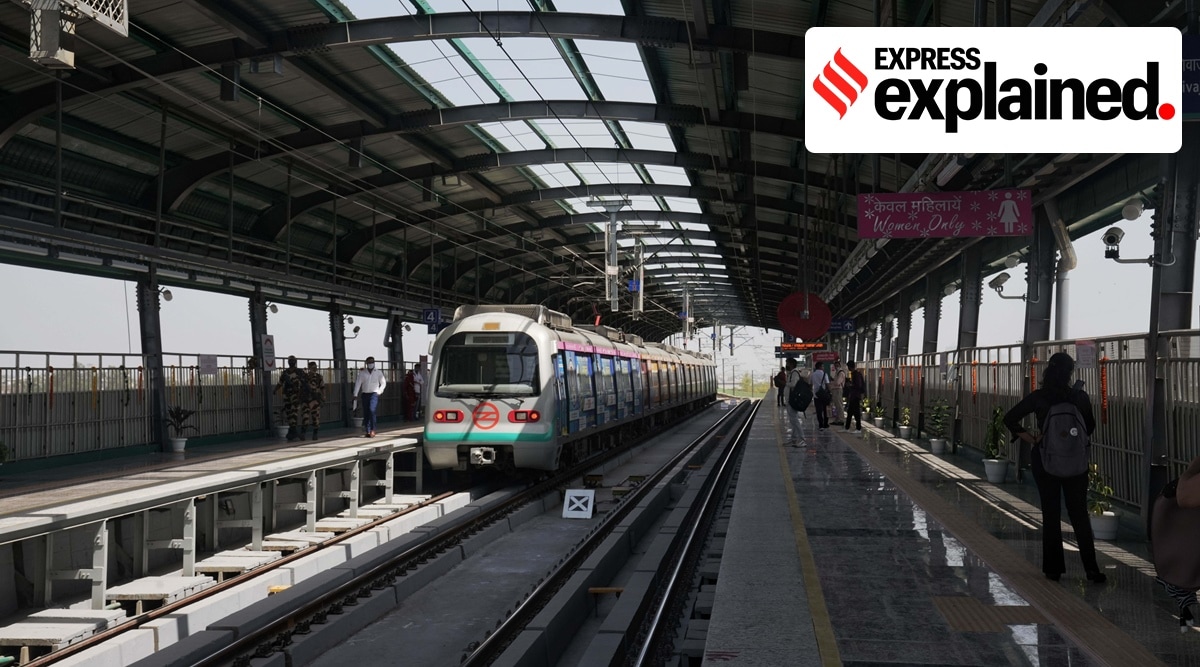You can carry 2 bottles of booze on all Metro lines: how the rule has changed
So far, liquor was allowed only on the Airport Express Line. The relaxed rule is likely to benefit customers who have been forced to buy from Gurgaon or Noida ever since the liquor policy mess disrupted supplies at stores in the capital
 Passengers were earlier strictly banned from carrying liquor bottles in the Delhi metro, except on the Airport Express Line, where it was allowed to take up to two sealed bottles of alcohol. (Representational image/Express photo by Abhinav Saha)
Passengers were earlier strictly banned from carrying liquor bottles in the Delhi metro, except on the Airport Express Line, where it was allowed to take up to two sealed bottles of alcohol. (Representational image/Express photo by Abhinav Saha) You can carry up to two sealed bottles of liquor on all lines of the Delhi Metro, the Delhi Metro Rail Corporation (DMRC) has said.
The DMRC said on Friday (June 30) that the decision had been taken after a committee comprising officials of the Metro and Central Industrial Security Force (CISF) reviewed the list of prohibited items on Metro trains. The CISF provides security on the Delhi Metro.
Hi. Yes 2 sealed bottles of alcohol is allowed in Delhi Metro.
— Delhi Metro Rail Corporation I कृपया मास्क पहनें😷 (@OfficialDMRC) June 30, 2023
DMRC did not say when this review meeting took place, and did not give a date for its implementation. Further clarifications were awaited on whether the changed policy is already in effect.
So what exactly has the DMRC said?
In a statement, Anuj Dayal, principal executive director of DMRC’s corporate communications, said: “As per an earlier order, carrying of alcohol was banned in the Delhi Metro except on the Airport Express Line. However subsequently, a committee comprising officials from CISF and DMRC have reviewed the list and as per the revised list, two sealed bottles of alcohol per person is allowed to be carried on the Delhi Metro at par with the provisions on the Airport Express Line.”
But you still cannot drink on the Metro premises — and you will still be penalised if you are found drunk on a train.
The DMRC urged passengers to maintain decorum on Metro premises. “In case any passenger is found behaving in an indecent manner under the influence of alcohol, suitable action shall be taken under the relevant provisions of law,” it said.
And what were the provisions of the older rule?
You could not carry liquor on any line except on the Airport Express Line (New Delhi Metro station to Dwarka Sector 21). On this line, which serves Terminal 3 of the Indira Gandhi International Airport, passengers were allowed to carry up to two sealed bottles of alcohol.
Alcohol has been part of DMRC’s list of ‘Prohibited items’, mentioned under ‘Flammable items’. It continues to be listed as a “prohibited item”; however, the list now says, in parentheses, “Sealed bottles maximum 02 per person (on par with DAMEL)”. DAMEL refers to Delhi Airport Metro Express Line.
Why has the rule been changed?
DMRC has given no reason. However, the ban on carrying alcohol on Metro trains has long been questioned — and the debate intensified after the Delhi government last August reverted to the old liquor policy, which led to a massive shortage of popular brands in the capital, and forced buyers to go to shops elsewhere in the NCR.
The ban on carrying liquor on the Metro in effect meant that those who bought their booze in say, Gurgaon or Noida, were compelled to take a cab just to be able to take the bottles back to Delhi.
Does this mean passengers can also carry alcohol from Gurgaon to Delhi via the Metro?
Yes, it does. Passengers boarding the Metro from all Delhi NCR cities, including Gurgaon, Faridabad, and Ghaziabad can carry liquor bottles to Delhi and vice versa. But as Dayal said, the rule remains the same as on the Airport Express Line: they can’t take more than two sealed bottles.
Following the liquor policy fiasco last year, alcohol sales have fallen in Delhi. According to a report by the representative body of alcohol beverage companies in India, liquor sales in the capital grew 19% between October and December 2022, but growth turned negative at minus 14% in the last quarter of the financial year, i.e January-March 2023.
- 01
- 02
- 03
- 04
- 05






































